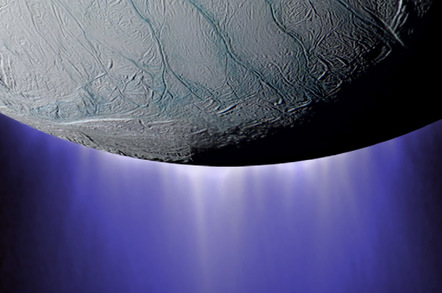
New NASA research confirms that Saturn is losing its iconic rings at the maximum rate. The rings have less than 100 million years to live. This is relatively short, compared to Saturn's age of over 4 billion years.

Researchers determined hydrocarbons can form the type of complex chains that create Titan's orange-brown haze layers at temperatures as low as 330 degrees below freezing on Earth.

Hubble Space telescope snapped a series of stunning images of auroras dancing in the sky. The observations were taken before and after the Saturnian northern summer solstice.

The mysterious surface of Saturn's huge moon Titan comes into gloriously sharp focus in newly released photos captured by NASA's Cassini spacecraft.

Using mass spectrometry data from NASA's Cassini spacecraft, scientists found that large, carbon-rich organic molecules are ejected from cracks in the icy surface of Saturn's moon Enceladus.

It's Surprisingly Like Earth. Saturn moon's three biggest puddles have a common equipotential surface – a sea level, just like our own oceans.

Using the now-complete Cassini data set, astronomers have created a new global topographic map of Titan.

The spacecraft deserves a fond farewell and a round of applause.

Nasa’s Cassini spacecraft is set to commence its final five orbits around Saturn, marking the final phase of its exploration mission of the planet.

Cassini will pass through Saturn’s upper atmosphere during the final five orbits of the mission, before making a fateful plunge into Saturn on 15 September 2017.

A discovery on Saturn's Moon Titan could be an indication of how life begins to emerge throughout the Universe.

If we're going start building colonies elsewhere, then one of the essential resources we're going to need is energy. A new study says Saturn's largest moon, Titan, has it in abundance.

Ihe intrepid orbiter sent back some truly stellar pics of the planet's most unusual feature: The raging hexagonal storm on its North Pole.

Before it goes out in a blaze of glory, Cassini has been sending back some of the most incredible images of Saturn and its moons—but one of its latest from Saturn’s rings is especially spectacular.
Saturn's sixth-largest moon is incredibly far from the sun, but new research shows that it could probably sustain life.